Best Hypoallergenic Baby Formulas (2024 Guide)
This post may contain affiliate links. As an Amazon Associate, I earn from qualifying purchases. Please read my disclosure.This in-depth, parent-friendly guide will help you find and buy the best hypoallergenic baby formulas. You will learn what types of HA baby formulas are available, what ingredients to avoid in formula, and where you can reliably purchase the best hypoallergenic formula. I update this post monthly to ensure that all of the information below is recent and accurate!
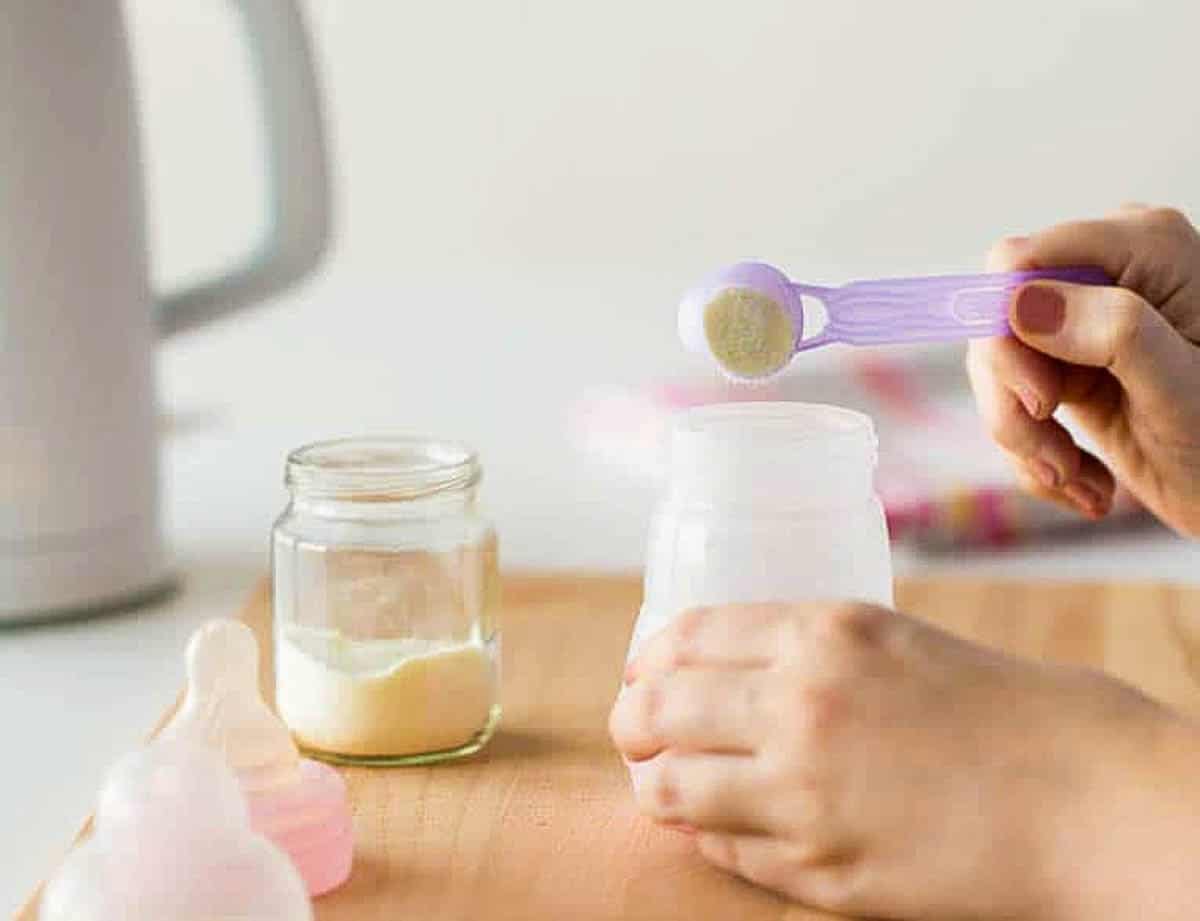
Finding the safest and healthiest formula for your baby can be a stressful process! I’ve heard from many of you that my guide to the best organic baby formula has been helpful in making that process a bit easier.
But navigating the world of hypoallergenic formulas can be even more stressful – because on top of trying to find a healthy solution, you know that your baby is getting sick from the milk protein in regular formula!
I was lucky enough to have two kids who didn’t have any allergies, but I have talked to so many moms who are frustrated with the lack of options for healthy, safe, organic, hypoallergenic baby formulas. So that’s why I created this guide, based on my extensive knowledge as a parent, certified health coach and nutritionist, and hundreds of hours working with families and researching infant formula!
A Disclaimer & Our Methodology
As a board certified health coach and certified nutritionist, I support products and ingredients that are rooted in science and are evidence-based. Using my background in nutrition, along with extensive research (see below for details), consultations with experts, and my own personal experience giving my two kids formula, I was able to arrive at this list of the best hypoallergenic formulas in this guide. This post has also been medically reviewed and fact checked by Linzy Ziegelbaum, MS, RD, CDN (see my about page for more info about Linzy).
My hypoallergenic formula recommendations are based on:
- Over 200 hours of extensive research
- Speaking with thousands of parents on what has worked for their children
- Reviewing the manufacturer’s claims and ingredients list, stages, and varieties of over 65 different formula brands
- Speaking with doctors and pediatricians
- Reviewing countless articles and peer-reviewed studies.
Though I may receive a commission (at no extra expense to you) if you purchase through some of the affiliate links provided, I only recommend products I’ve researched, evaluated, consulted experts on, and would feel comfortable giving to my own two children.
As always, I only share products that are the highest quality and that can help you and your family the most. By purchasing any of these products from the links below, you help keep this blog running, so thanks for your support!
Keep in mind that every baby & situation is different, so when it comes to choosing a baby formula, please consult with your pediatrician first before starting or switching to a new formula. My recommendations are not a substitute for professional medical advice, diagnosis, or treatment.
What Is A Hypoallergenic Formula?
A hypoallergenic baby formula is one that’s specifically designed for babies who have a cow’s milk protein allergy, who have trouble digesting cow’s milk, or have other milk or lactose sensitivities.
The reason they’re called “hypoallergenic” is because they’re made with hydrolyzed milk proteins, which are designed to minimize the risk of allergic reactions in infants. “Hydrolyzed” means that the milk proteins are broken down into smaller pieces (essentially, partially digested), which is what makes them easier for babies to digest and less likely to trigger a reaction.
This is why they’re often recommended by pediatricians or healthcare professionals when there are concerns about a baby’s ability to tolerate standard infant formula.
The extensiveness of hydrolyzed proteins needed (how broken down the proteins are) depends on how severe your baby’s allergy or intolerance is.
The American Academy of Pediatrics has strict guidelines for what constitutes a hypoallergenic formula including:
- The formula must be studied in a clinical trial
- The formula must be studied with infants who have a cow’s milk allergy
Hypoallergenic formulas are typically more expensive than regular infant formulas, and they should only be used under the guidance of a healthcare professional. If you suspect your baby has allergies or digestive issues, consult with your pediatrician or a pediatric allergist to determine the most appropriate formula for your baby’s specific needs.
What Are The Different Types Of Hypoallergenic Formulas?
Hypoallergenic baby formulas typically fall into six main categories – let’s take a look at each in detail:
Partially Hydrolyzed Formulas
These formulas contain cow’s milk proteins that have been partially broken down (hydrolyzed) into medium to smaller fragments. This makes them easier for some babies to digest and reduces the risk of allergic reactions compared to intact proteins found in regular milk-based formulas.
They are usually recommended for babies with mild to moderate allergies or digestive sensitivities, but can still trigger an allergic reaction in babies who have a more severe allergy to cow’s milk.
Extensively Hydrolyzed Formulas
These are considered truly hypoallergenic, and are meant to be tolerated by 90% of infants. They are made for infants who can’t digest or are allergic to intact cow’s milk protein. These formulas contain proteins that have been extensively broken down into very small fragments.
Because the casein (the cow’s milk protein) is in such small pieces, this further reduces the risk of allergic reactions and is often recommended for babies with severe allergies or conditions like cow’s milk protein allergy (CMPA).
Amino Acid Based Formulas
These types of formulas are 100% hypoallergenic. Amino acid-based formulas don’t contain even extensively hydrolyzed proteins or any partially whole protein molecules at all. Instead, they break down the proteins into their building blocks – called amino acids.
Because they contain individual amino acids instead of whole proteins, these are the most hypoallergenic formulas you can find. Amino acid-based formulas are the most expensive, and therefore are usually recommended for babies with severe allergies, or who cannot tolerate other types of hypoallergenic formulas.
Vegan Baby Formulas
This is an interesting, newer category on the market. Vegan baby formulas are 100% dairy free, and are made with alternative proteins like pea protein or brown rice protein. This means they contain no milk proteins at all, and may be suitable for babies with a milk protein allergy or sensitivity, provided your baby doesn’t have allergies to other foods like peas or brown rice. (Learn More: Best Vegan Baby Formula).
Soy Formulas
While these are an alternative to cow’s milk formulas, 8-14% of infants with a cow’s milk allergy will react to soy. On top of that, too much soy for infants hasn’t been studied in terms of its long term effects – so I don’t like recommending soy-based formulas, especially non-organic soy formula, for babies with a cow’s milk protein allergy.
Goat Milk Formulas
This can be a good option if your baby has a cow’s milk sensitivity vs. a diagnosed cow’s milk protein allergy. Goat milk formulas will not work for babies with CMPA, but they can work for babies who just have a milder cow’s milk sensitivity. Goat milk contains A2 casein proteins instead of the A1 proteins found in cow’s milk, which can make it easier to digest and tolerate for some babies.
For Goat Milk formulas, I’d recommend: Kendamil Goat, Kabrita USA or Holle Goat. For more details on goat milk formula, check out this guide to the best goat milk formula and this guide comparing goat milk formula vs cow milk formula.
How Do I Know If My Baby Needs A Hypoallergenic Formula?
Determining whether your baby needs a hypoallergenic formula is typically based on the guidance of a healthcare professional, such as your pediatrician or a pediatric allergist. Their assessment is based on specific symptoms that may indicate an allergy or intolerance to standard infant formula. Here are some key signs and situations that may indicate a need for a HA formula (source 1 – NIH, source 2 – American Academy of Pediatrics):
- Skin Issues: If your baby experiences symptoms of an allergic reaction after consuming regular infant formula, such as hives, eczema, rashes, swelling, etc. it could be a sign of an allergy.
- Digestive Issues And/Or Reflux: Babies with gastrointestinal issues like excessive gas, chronic diarrhea, vomiting, constipation, bloody stools, or severe reflux, may benefit from hypoallergenic formulas, as these issues can sometimes be associated with food allergies or intolerances.
- Respiratory Problems: Wheezing, coughing, or difficulty breathing may also be signs of an allergic reaction, although these symptoms can also be caused by other conditions.
- Failure To Thrive: If your baby is not gaining weight or growing as expected, it could be due to their inability to properly digest the proteins in regular formula.
- Fussiness Or Colic: While fussiness is common in babies, excessive fussiness or colic, especially after feeding, might suggest an issue with the formula.
- Family History Of Allergies: If there is a strong family history of allergies, particularly to cow’s milk protein or other common allergens, your baby may be at an increased risk of developing allergies or sensitivities.
- Continued Symptoms Despite Other Interventions: If your baby’s symptoms persist or worsen despite other interventions, such as changing your diet (if breastfeeding) or switching to a different standard infant formula, it may be an indication that a hypoallergenic formula is needed.
- Medical Diagnosis: In some cases, a healthcare professional may diagnose your baby with a specific condition, such as cow’s milk protein allergy (CMPA), which often requires the use of hypoallergenic formula as part of the treatment plan.
Features And Ingredients To Look For When Choosing A HA Formula
When choosing a hypoallergenic formula for your baby, you should look for formulas that are specifically designed to be hypoallergenic and have the cleanest ingredients list possible.
Keep in mind that since HA formulas have broken down milk proteins and also tend to have reduced lactose, they often have to add in another carbohydrates to meet the nutritional requirements for infants.
Because of that, it’s nearly impossible to find an HA formula that is “perfect” – e.g. that has zero additives and zero added sugars or starches, but the key is to look for the formulas that minimize the use of fillers and really tend towards all-natural ingredients as much as possible. Here are some key ingredients and features to consider when selecting a hypoallergenic formula:
✅ Certified Organic (either USDA or EU Certified) or at least Non-GMO
✅ Meets nutritional standards for babies (in the US or the EU) and includes key vitamins and minerals for development (Note: requirements are different in the US and EU for both iron and DHA).
✅ No sugar, sucrose, or syrup solids (or minimal use)
✅ Includes Omega 3 Fats (DHA, ALA) and Omega 6 fatty acids (ARA, LA)
✅ Includes prebiotics and probiotics (Learn More: Prebiotics For Kids)
✅ Gluten free, soy free (with the exception of organic soybean oil, and organic soy lecithin, which is ok)
✅ Palm oil free (or uses palmitic acid, or sustainable palm oil. Learn more: Palm Oil In Baby Formula)
✅ No carrageenan
✅ No maltodextrin
✅ Mixes easily, and with a taste babies can tolerate (based on reviews)
✅ Suits your budget
Ingredients To Avoid
❌ Processed Refined Sugars (Syrup, Syrup Solids): Corn syrup solids (glucose syrup solids), sugar, or brown rice syrup.
❌ Maltodextrin Or Other Added Starches: A partially hydrolyzed starch derived from corn, rice, or potatoes.
❌ Carrageenan: Typically added as a stabilizer to ready-to-feed formula in the US; it is not allowed in the EU and has been linked to intestinal inflammation.
❌ Palm Oil: to mirror the levels of palmitic acid, which is found in breastmilk, some manufacturers add palm oil. The problem is that palm oil in formula does not act the same way that palmitic acid does in the baby’s gut. Palm oil reacts with calcium, and causes the formation of “soaps” in the baby’s intestines (which can cause digestive issues). Palm oil is in most formulas (EU & US), but more manufacturers are now making formula without it.
❌ GMO Ingredients: Ingredients that are GMO may have had the use of pesticides or antibiotics during the growing process.
❌ Soy: Soy protein (and soy formula) are problematic for infants because of their phytoestrogen content (check out this study about soy).
Below, I have listed the best hypoallergenic baby formula on the market today, followed by more details on each. Click on the formula name to go to the best online retailer of the formula.
The Best Hypoallergenic Baby Formulas
While no hypoallergenic formula is perfect, the hypoallergenic baby formulas below are considerably better than the rest. You can click on the formula name in the table below to find the best online retailer of the formula. We have organized the formula by type, from partially hydrolyzed to extensively hydrolyzed, and have included more alternative formula options (vegan, goat milk, etc) as well!
Partially Hydrolyzed Formulas
These formulas are all partially hydrolyzed, which means their milk proteins are broken down but are still detectable for babies with severe allergies. We have listed these formulas in order of preference, based on their ingredients, since all of them are about the same in terms of hydrolyzation.
HiPP HA PRE
HiPP HA formula comes in 3 stages: Stage PRE, Stage 1, and Stage 2. Besides the age ranges these stages are designed for, there are slight differences in ingredients as well, so we have listed them separately here. HiPP German Stage PRE formula is a complete nutrition suitable for infants from birth up to six months of age and specifically designed hypoallergenic with extensively hydrolyzed whey protein (86-87% broken down). It doesn’t contain casein (100:0 ratio), but it does not have a reduced lactose content. The main difference between HA PRE and HA Stage 1/2 is that PRE has no starch added.
Try This Formula If: Your baby has a cow’s milk allergy or sensitivity and you haven’t tried another hypoallergenic option (or you’re trying to move away from the US hypoallergenic options because of concerns over ingredients). Has extensively hydrolyzed protein, (86-87% broken down), 100% whey (no casein), no starch, but with the same lactose content as a non-hypoallergenic baby formula.
Cost: $42.99 for a 600 gram box.
For any of the Dutch or German formulas, their labels may not always come with an English translation, so we have partnered with Bottles & Burps to provide you with detailed guides for all of the non-UK based hypoallergenic baby formulas! Here is the guide for HiPP HA PRE – for translated nutritional labels, ingredients and preparation instructions so it’s easy to compare to any US based formulas.
You can also get 20% off any single pack at Bottles & Burps using the code PICKYEATER20! (just enter it manually in the checkout process!)
Pros
Cons
HiPP HA Stage 1
HiPP hypoallergenic formula (Stage 1) is meant for babies aged 0-6 months, and is nutritionally similar to HiPP PRE. Note that all European hypoallergenic formulas and US hypoallergenic formulas contain hydrolyzed milk proteins, which cannot be certified as organic due to strict EU regulations. However, all the other ingredients in HiPP HA (for all stages) are organic. Just like HiPP PRE, this Stage 1 HA formula has extensively hydrolyzed whey protein (86-87% broken down), no casein, and a regular lactose content.
Try This Formula If: Your baby has a cow’s milk allergy or sensitivity, you want a formula that you can use up to 6 months of age, and you haven’t tried another hypoallergenic option (or you’re trying to move away from the US hypoallergenic options because of concerns over ingredients).
Cost: $39.99 for a 600 gram box.
Translated Nutritional Information: HiPP HA Stage 1
Pros
Cons
HiPP HA Stage 2
HiPP HA Stage 2 is designed for babies aged 6 months and older, and can be used on its own as a breast milk substitute or a supplement for breastfeeding. Like HiPP HA Stage PRE and Stage 1, Stage 2 also uses lactose as the primary carbohydrate and has the same amount of lactose as regular formulas. It is also 86-87% hydrolyzed, with no casein. If your baby has been doing well on HiPP HA Stage 1, it makes sense to transition to Stage 2 once your baby turns 6 months old.
Try This Formula If: Your baby is over 6 months of age, has a cow’s milk allergy or sensitivity and you haven’t tried another hypoallergenic option or are moving up from HA Stage 1 (or you’re trying to move away from the US hypoallergenic options because of concerns over ingredients).
Cost: $40.99 for a 600 gram box.
Translated Nutritional Information: HiPP HA Stage 2
Pros
Cons
HiPP HA Dutch (Stage 1 & 2)
HiPP HA now comes in its Dutch formulation! Ingredients wise, it’s basically identical to the HiPP German HA formula, now that the German HA formula doesn’t include starch. The main difference is that the Dutch formulation comes in a larger, stackable container (vs. the smaller cardboard box for the German version). Stage 1 is suitable for babies aged 0-6 months, Stage 2 is for babies 6-12 months.
Try This Formula If: Your baby has a cow’s milk allergy or sensitivity and you haven’t tried another hypoallergenic option and you want a starch-free higher protein HA formula. Has extensively hydrolyzed protein, (86-87% broken down), 100% whey (no casein), and the same lactose content as a non-hypoallergenic baby formula.
Cost: $62.99 for an 800 gram can.
Translated Nutritional Information: HiPP Dutch HA Stage 1, HiPP Dutch HA Stage 2
Pros
Cons
Bobbie Organic Gentle Infant Formula
Bobbie Organic Gentle Formula is the first USDA and EU Organic sensitive formula made with 100% lactose carbohydrates. It contains partially hydrolyzed milk proteins, no synthetic ingredients, and is the most affordable gentle formula I’ve found on the market today!
Try This Formula If: You need a gentle cow’s milk formula for your baby, and your baby doesn’t have a diagnosed cow’s milk protein sensitivity or allergy. Bobbie Organic Gentle Formula is the only US-manufactured tolerance infant formula designed for infants with fussiness, gas and crying that is formulated to support easy digestion, with 100% partially hydrolyzed whey as the protein source and 100% lactose as the carbohydrate source, like that found in breast milk. Bobbie Gentle Formula is not hypoallergenic, according to US requirements, but is similar to EU hydrolyzed formulas which are considered hypoallergenic by EU standards. It is also palm oil free and does not have any soy allergens.
Cost: $28 for a 400 gram can.
Pros
Cons
Extensively Hydrolyzed Formulas
We have listed these formulas in order of least hydrolyzed (86% with HiPP Comfort) to most hydrolyzed (100% with Gerber HA). Each of these formulas have different pros and cons, which is why we haven’t listed them in order of recommendation – since each one could be the best fit for your baby depending on their needs.
HiPP Comfort
HiPP Comfort is most similar to a US extensively hydrolyzed hypoallergenic formula. While it’s similar to HiPP HA in that it contains 86-87% hydrolyzed milk proteins and no casein, it’s even more allergen friendly because it has a reduced lactose content and modified fats for even easier digestion. (Learn More: Lactose Free Baby Formula).
HiPP Comfort just has “one stage” in that it’s suitable for babies aged 0-12 months! While HiPP Comfort formula cannot be certified as organic because the hydrolyzed milk protein is not available in organic form, the majority of the other ingredients in this formula are organic, and all ingredients are non GMO.
What’s interesting about HiPP Comfort is that while, in formulation, it is the closest to a US hypoallergenic formula and is more broken down than HiPP HA, it’s technically not labeled as a hypoallergenic formula in the EU for regulatory reasons. Comfort is typically indicated for gassiness, colic and constipation. (Learn More: Best Formula For Gassy Babies). We do, in practice, find that parents seeking a “hypoallergenic” formula have been successful with Comfort. So for those who have babies with sensitive tummies, or who react to both whey and casein, this may be the baby formula for you!
Try This Formula If: Your baby has a cow’s milk allergy or sensitivity and HiPP HA hasn’t worked. You can also go straight to this formula if your baby’s symptoms seem more severe, since this formula is going to be more gentle than the HA formulas listed above.
Cost: $39.99 for a 600 gram box.
Translated Nutritional Information: HiPP Comfort
Pros
Cons
Alimentum® Ready to Feed
All of the US hypoallergenic formulas are more extensively hydrolyzed than the European options listed above (HiPP HA and HiPP Comfort). Common extensively hydrolyzed formulas in the US include Alimentum® or Nutramigen®, which are about 93% hydrolyzed. The ready to feed versions have slightly different ingredients than the powdered versions so we have listed them separately here. But if your baby tolerates HA or Comfort I would choose those over Alimentum/Nutramigen given that the ingredients list is cleaner. However, if HA or Comfort don’t work, then you have to move to a more hydrolyzed formula like the US options listed here.
Try This Formula If: Your baby has a cow’s milk protein allergy, HiPP HA and Comfort have not worked, and you are looking for an option with less sugar (and you’re not as concerned about carrageenan). RTF Alimentum includes carrageenan, powdered Alimentum does not. Carrageenan is a food stabilizer and thickener which can cause inflammation in the body. Between the two versions of Alimentum it’s a tradeoff with more sugar and no carrageenan vs. less sugar and added carrageenan.
Cost: $66.86 for a pack of (6) 32 fluid oz bottles.
Pros
Cons
Similac Alimentum® (Powdered)
Similac Alimentum® powdered formula is very similar to the ready to feed formula with just a slight difference in certain stabilizing ingredients and the amount of sugar included. This version is also extensively hydrolyzed (93%) making it suitable for babies with cow’s milk protein allergies or lactose sensitivities.
Try This Formula If: Your baby has a cow’s milk protein allergy and/or HiPP HA and Comfort have not worked, and you prefer a powdered formula vs. ready to feed. Keep in mind the powdered version has much higher sugar, but no carrageenan compared to the RTF version.
Cost: $36.49 for a 12.1oz can
Pros
Cons
Nutramigen® Ready to Feed
Enfamil Nutramigen is very similar to the RTF version of Alimentum with the exception of prebiotics (Alimentum has it, but the RTF version of Nutramigen does not). However, the ready to feed version of Nutramigen does contain way less sugar than the powdered version, and is extensively hydrolyzed so it’s suitable for babies with cow’s milk protein allergies or lactose intolerance.
Try This Formula If: Your baby has a cow’s milk protein allergy, HiPP HA and Comfort have not worked, you are looking for an option with less sugar, you’re not as concerned about carrageenan, and you can’t find the RTF version of Alimentum.
Cost: $102 for a (6) pack of 32oz bottles.
Pros
Cons
Enfamil Nutramigen® (Powdered)
The powdered version of Nutramigen is almost identical to the powdered version of Alimentum. They are pretty interchangeable and have similar pros & cons. It’s 93% hydrolyzed, works for CMPA or lactose intolerance. In clinical studies, infants showed improvement after just 48 hours of being on this formula. (Learn More: HiPP HA vs. Nutramigen).
Try This Formula If: You have tried HiPP HA and HiPP Comfort and neither have worked, and/or your baby has a cow’s milk protein allergy. Also worth trying if you can’t find the powdered version of Alimentum, as this is a very similar formula.
Cost: $37.80 for a 12.6oz can
Pros
Cons
Gerber Extensive HA
This formula is 100% hydrolyzed, so it’s even more broken down than Alimentum / Nutramigen, and is the most extensively hydrolyzed formula I’ve found on the market today. It contains 100% whey protein broken down into tiny pieces designed to be well-tolerated by most babies with CMPA and ultra-filtered for low residual allergenicity. It’s also a lactose-free formula, so it covers most milk related allergies out there! It also happens to be Non-GMO – which is a huge plus since most US hypoallergenic formulas are not.
Try This Formula If: You need a 100% extensively hydrolyzed formula. You have tried HiPP HA and HiPP Comfort and neither have worked, and your baby has a cow’s milk protein allergy.
Cost: $32.29 for a 14.1 oz can.
Pros
Cons
Amino Acid Based Formulas
There are really only two amino acid based formulas in the US, and they’re pretty equivalent in terms of ingredients. The main issue with both has been availability and price, so if your pediatrician has recommended an amino acid based formula, your best bet is to just choose the one that’s most budget friendly and easy to find! Additional considerations are – picking the one your baby tolerates the most and the one that tastes the best.
Neocate®
Neocate® is 100% hypoallergenic and is made up of amino acids exclusively. It is considered a medical food, and should only be used under the supervision / recommendation of your child’s pediatrician. In clinical studies, Neocate® has been shown to reduce allergic reactions and CMPA symptoms within 3-14 days.
Try This Formula If: Your pediatrician has specifically suggested that you use an amino acid based formula and/or you have tried the other formulas on this list and your baby is still having digestive issues (indicative of a more severe cow’s milk allergy).
Cost: $44.5 for a 14.1 oz can
Pros
Cons
EleCare®
EleCare® is a hypoallergenic, amino acid based formula, similar to Neocate®. It is made with 100% free amino acids as the protein source for infants who cannot tolerate intact or hydrolyzed protein.
Try This Formula If: Your pediatrician has specifically suggested that you use an amino acid based formula and/or you have tried the other formulas on this list and your baby is still having digestive issues (indicative of a more severe cow’s milk allergy).
Cost: $43.69 for a 14.1 oz can.
Pros
Cons
Vegan Baby Formulas
There are only a couple of high quality, organic, vegan formulas that are suitable for infants on the market today. These are our top 2 picks for dairy free baby formulas that may work for an infant with a milk protein allergy. You can see all of the options for vegan baby formulas in our linked guide!
Bebe M Stages 1-3
Bebe M (Bebe Mandorle) Organic Rice-Based Infant Formula is 100% organic, and suitable from birth until 12 months of age (Stage 1 is from 0-6 months, Stage 2 from 6-9 months, Stage 3 from 10 months – 3 years of age!).
It uses 100% plant-based ingredients that are tightly regulated by the EU, designed to meet the nutritional requirements for babies. It is made from an organic rice protein hydrolysate, which makes it a dairy-free formula that’s vegan friendly, but is also suitable for babies with dairy allergies or lactose intolerance. It also contains no palm oil and has a super clean ingredients list! (Learn more: Palm Oil In Baby Formula).
Try This Formula If: Your baby seems to have a cow’s milk allergy, and you want to try an organic formula to meet your baby’s nutritional requirements, and your baby doesn’t have an allergy to brown rice proteins.
Note: This product is labeled as “Foods for special medical purposes (FSMPs)” and should be only given under medical supervision. Please consult your pediatrician before introducing this formula to your baby.
Cost: $64.99 for a 600 gram can.
Pros
Cons
Premibio® Organic Vegan Stages 1-3
Premibio® Organic Rice-Based Infant Formula is 100% organic, and suitable from birth until 12 months of age (comes in 3 stages, just like Bebe M above).
This is a lactose-free and vegan formula based on hydrolyzed rice protein, and is also gluten-free and palm oil free. It uses 100% plant-based ingredients, and meets the nutritional requirements for babies for growth and development. Because it is dairy free, it can be suitable for babies with a lactose or cow’s milk allergy.
Try This Formula If: Your baby seems to have a cow’s milk allergy, and you want to try an organic formula to meet your baby’s nutritional requirements, you want a cheaper alternative to Bebe M, and your baby doesn’t have an allergy to brown rice proteins. Please consult your pediatrician before introducing this formula to your baby.
Cost: $49.99 for a 600 gram can.
Pros
Cons
Goat Milk And A2 Protein Formulas
There are quite a few different goat milk and A2 milk protein formulas on the market today. We have just short listed the top 5 here, but you can learn more about goat milk formulas and A2 baby formulas in our linked guides. These can be good options for babies with a mild cow’s milk sensitivity, but not a diagnosed cow’s milk protein allergy (as babies with a severe allergy may still react to goat milk proteins).
Jovie Goat Milk Formula
A great option for a goat milk formula, Jovie is made in the Netherlands, and is committed to producing high quality, 100% organic whole goat milk formulas that meets babies and toddlers nutritional needs. Since it’s made with whole goat milk, it contains only A2 casein milk protein, which is easier to digest for babies and may be less reactive for infants with sensitive digestive systems. Comes in 3 stages – Stage 1 is from birth to 6 months, Stage 2 from 6-12 months of age, and Stage 3 for age 1+.
Try This Formula If: Your baby has a cow’s milk sensitivity, but not a diagnosed cow’s milk allergy. Goat milk formula is easier to digest because goat milk has A2 milk protein (vs A1 which is in cow’s milk and is harder to digest).
Cost: $63.99 for an 800 gram can.
Pros
Cons
Kendamil Goat
Kendamil uses whole goat milk instead of skimmed milk. It also has no palm oil, no soy, no added sugars, and is 100% vegetarian – uses plant based DHA/ARA with NO hexane extraction. Contains prebiotics and has a whey:casein ratio that mimics breastmilk for easy digestion. Is technically not organic, but is non-GMO and has Red tractor certified ingredients. This means Kendamil follows rigorous production standards and the farms they obtain their goat milk from do not use growth hormones or antibiotics. Formulated especially for infants, with 3 different stages to accompany your baby from infancy to their toddler years. It’s also available in the US for purchase at Target!
Try This Formula If: Your baby has a cow’s milk sensitivity, but not a cow’s milk allergy, and you want to try a formula that has A2 milk proteins for easier digestion.
Cost: $65.99 for an 800 gram can.
Pros
Cons
Kabrita USA
Kabrita USA is technically a toddler formula, but it does meet the nutritional requirements of infant formula (so just make sure your pediatrician is comfortable with you using it). Kabrita USA also has a super clean ingredients list, it contains no added sugars, no maltodextrin, no syrup solids and has the right composition of essential fatty acids to be gentle for babies’ tummies to digest. It’s also one of the more affordable options for goat milk formula. Lastly, Kabrita is offering 10% off all orders with the coupon code GENTLEKABRITA! (Note: Kabrita does have an infant formula as well that also has a clean ingredients list. Their infant formula has to be shipped from Europe while their toddler formula is available for sale in the US).
Try This Formula If: Your baby has a cow’s milk sensitivity, but not a cow’s milk allergy. Goat milk formula has been a good option for babies with a cow’s milk sensitivity. But if your baby has a diagnosed cow’s milk protein allergy, they may have an issue with goat milk protein as well. You should also make sure your pediatrician is ok with you using Kabrita for your baby before you start this (or any other) formula, especially since Kabrita is technically a toddler formula.
Cost: $19.99 for a 14oz (400 gram) can.
Pros
Cons
Holle A2
Holle organic A2 formula comes in multiple stages to grow with your baby. It’s certified organic by the EU, non-GMO, uses A2 skimmed milk (organic nonfat milk) which may be easier for babies to digest. Holle A2 cow milk formula is created from 99% organic ingredients and has no added sugars. Babies who have trouble digesting regular formula (made with A1 cow’s milk) may do better on A2 cow’s milk. The A2 beta-casein protein type is typically easier to digest than A1 milk proteins (which is the more common protein found in cow’s milk) This formula allows babies to continue drinking cow’s milk but without the protein that causes the discomfort. Contains DHA, but does not contain prebiotics or probiotics.
Try This Formula If: Your baby has an A1 casein allergy, but not a cow’s milk protein allergy, and you don’t want to try a goat’s milk formula.
Cost: $32.99 for a 400 gram box.
Pros
Cons
Are European Hypoallergenic Formulas Better Than US Formulas?
In this guide we have listed both European hypoallergenic formulas and US options – since some of the most allergen friendly formulas (e.g. amino acid formulas) are made in the United States. However, in general, the best hypoallergenic formulas with the most all natural ingredients are the European options. Here’s what makes the European formulas better than most US HA formulas:
- No processed or refined sugars (syrup, syrup solids, maltodextrin, sugar, brown rice syrup, etc).
- Limited use of vegetable oils and less healthy fats
- They taste much better than the US hypoallergenic formulas! US hypoallergenic formulas are notorious for tasting and smelling bad – and that can make it even more challenging to get your baby to drink them. But because European formulas are made with whole food and minimally processed ingredients, they are usually well tolerated by babies in terms of taste and smell.
- They’re pretty comparable in price, and can be easier to find than some of the US formulas.
Are The US Formulas Really That Bad?
Unfortunately yes, the US formulas rely on cheaper ingredients like maltodextrin and syrup solids in order to meet the requirements for essential nutrients for babies. Even if you just look at the sugar content and ignore the highly processed ingredients, these formulas do have some less-ideal ratios. Look at the ingredients from some of the most popular brands – and you’ll see that over 50% of the ingredients are literally just sugar. That’s just like spoon feeding your infant table sugar! It’s ridiculous. While there are two options without a high amount of sugar (Nutramigen® and Alimentum® ready to feed versions), they both have carrageenan added, which is also not ideal.
Here are the ingredients list for the powdered versions of 3 of the most popular US HA formulas:
- Alimentum®: Corn Maltodextrin (35%), Casein Hydrolysate [Derived from Milk] (18%), Sugar (15%), High Oleic Safflower Oil (10%), Medium-Chain Triglycerides (10%), Soy Oil (8%).
- Neocate®: Corn Syrup Solids (51%), Refined Vegetable Oil (Medium Chain Triglycerides (8%), High Oleic Sunflower Oil (6%), Sunflower Oil (4%), Canola Oil (4%)), Fructooligosaccharides (Oligofructose (4%), Inulin (0.5% )
- Nutramigen®: Corn Syrup Solids (48%), Vegetable Oil (Palm Olein, Coconut, Soy, and High Oleic Sunflower Oils) (26%), Casein Hydrolysate (Milk) (16%)*, Modified Corn Starch (4%)
If you compare that to the Ingredients in HiPP Comfort or the Ingredients in HiPP HA – you’ll see that there is zero added sugar for both of these formulas!
So if your little one is allergic to cow’s milk protein, I’d definitely recommend trying HiPP Comfort or HiPP HA before any of the US based hypoallergenic formulas. However, if your baby doesn’t tolerate HiPP, you will have to use the US formulas and potentially even the US amino acid formulas.
As for where to purchase these formulas, I’m in personal contact with the owners of all of these companies: The Milky Box, Baby Milk Bar, Bottles and Burps, Organic Formula Shop, Organic’s Best, and Organic Baby Food, and I feel comfortable recommending them to you as options!
Note: If you are looking for more information US baby formulas and you don’t need a hypoallergenic option, I’d recommend looking at this post on the best baby formula made in the US.
FAQs
Talk to your pediatrician first! Don’t start experimenting with formulas until you have a diagnosis from your pediatrician, and the green light to try whichever formula you decide to go with. Once you and your child’s pediatrician have come up with a treatment plan, then you can introduce a hypoallergenic formula.
Potentially yes, but you should never switch formulas before talking to your child’s pediatrician first. Many babies do outgrow their allergies, cow’s milk protein included, so it is possible that after a while your baby may not need a HA formula anymore. But you will need your baby’s pediatrician to evaluate their condition first before making a recommendation on switching.
Typically, many parents may notice a change within 48-72 hours. However, it can take anywhere from 48 hours to 2 weeks for all of your baby’s symptoms to dissipate.
Final Thoughts
Finding the right formula for your baby can be a bit of a process. But I hope this post helped you navigate finding best hypoallergenic baby formula – based on the options available on the market today.
Ultimately, the most important thing is that your baby is fed, happy, and healthy. And switching to a HA formula can make your and your baby’s life a lot easier, by alleviating their digestive symptoms, colic, or other allergic reactions!
As with any formula, make sure to consult your baby’s doctor before switching formulas or introducing a new formula to your baby. And if you have any questions, don’t hesitate to leave a comment or contact me here – I respond to every message I get!
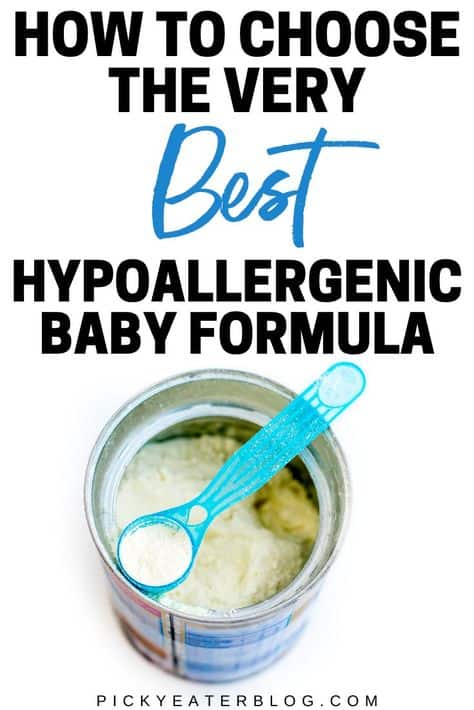



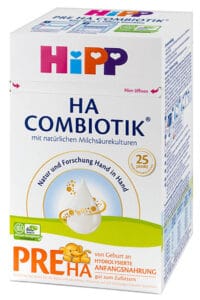
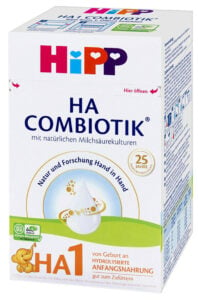
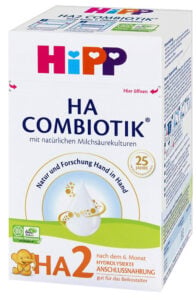
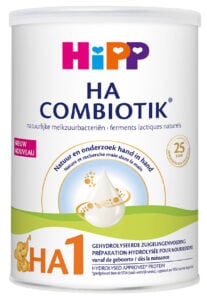
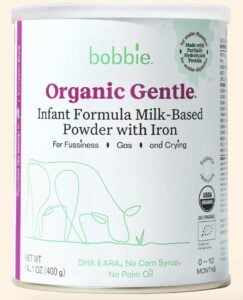
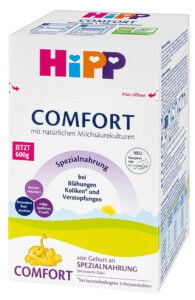
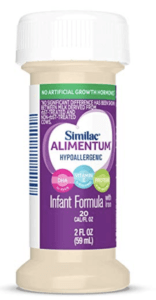
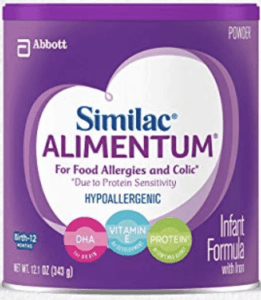
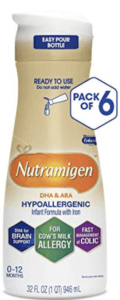
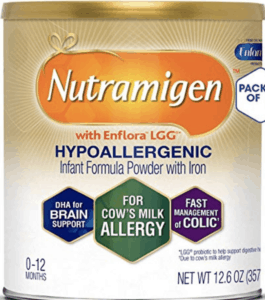
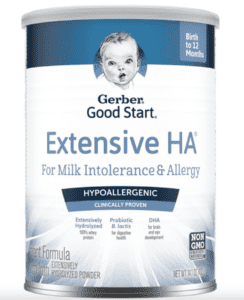
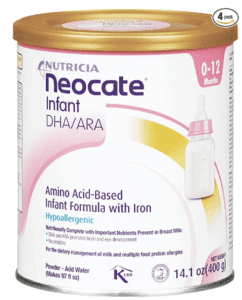
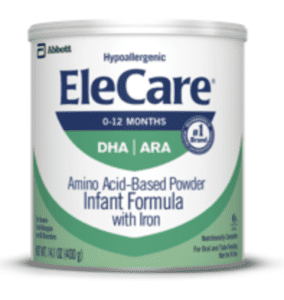
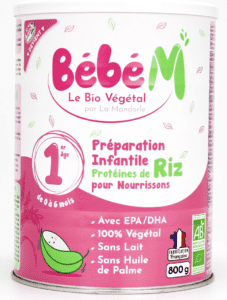
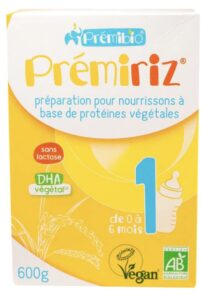
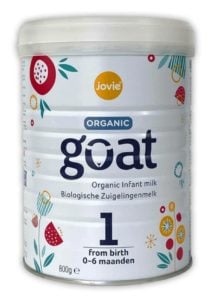
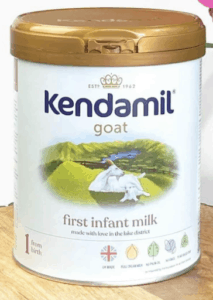
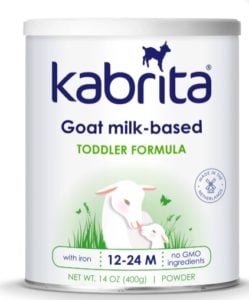
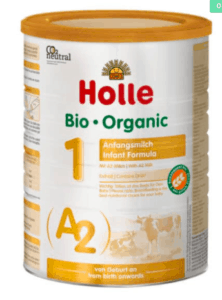
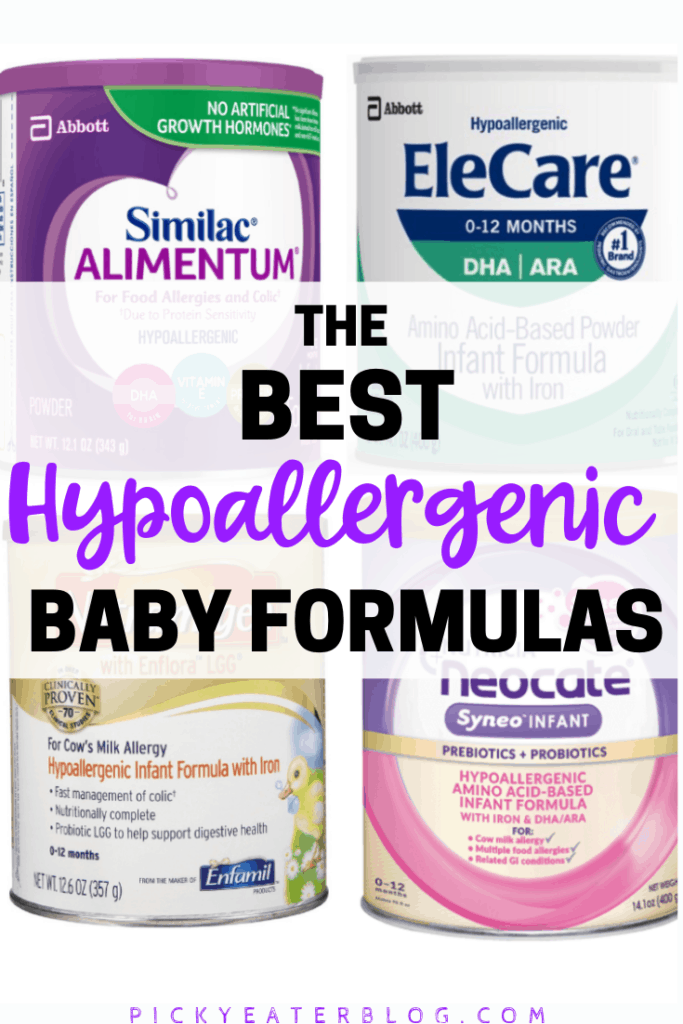

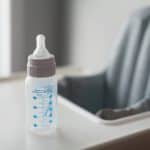
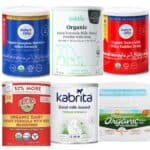




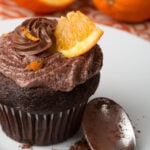
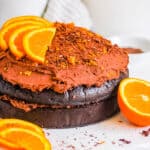
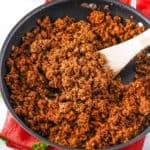
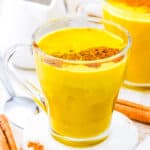
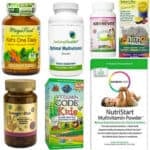
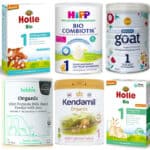



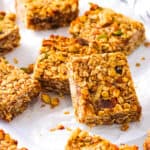




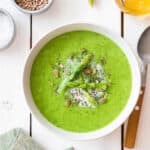

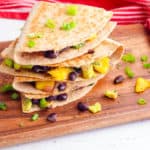


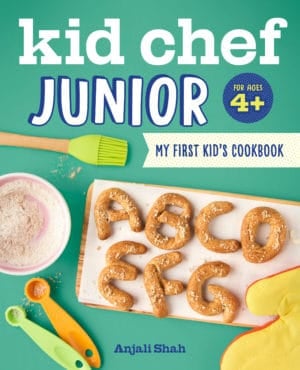

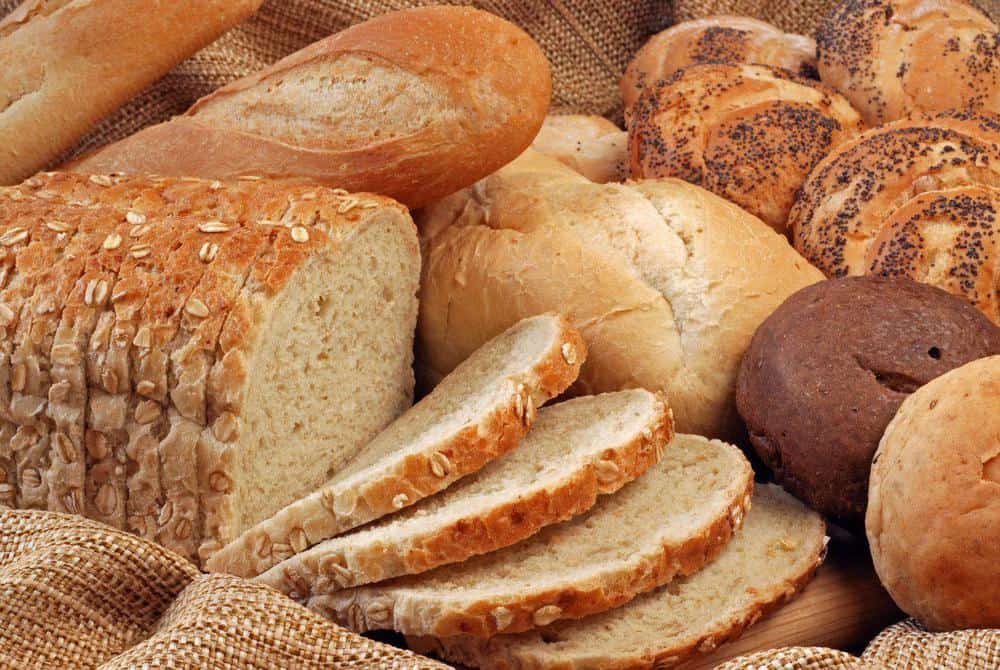
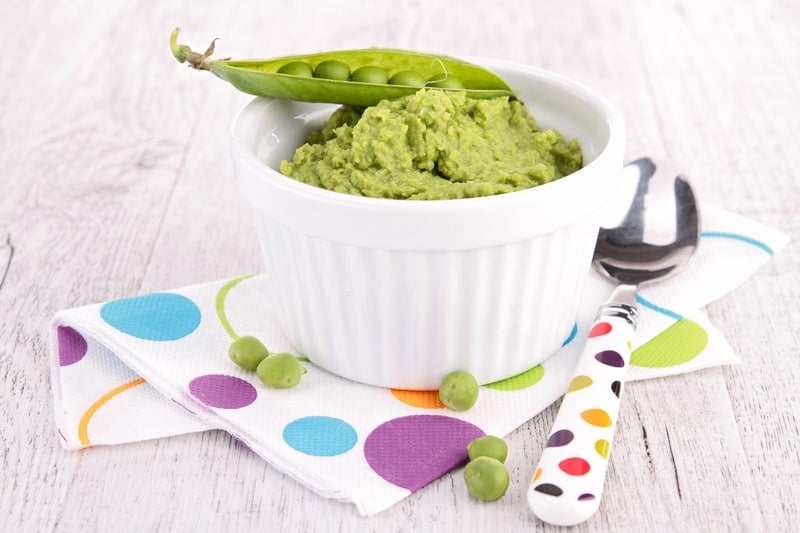
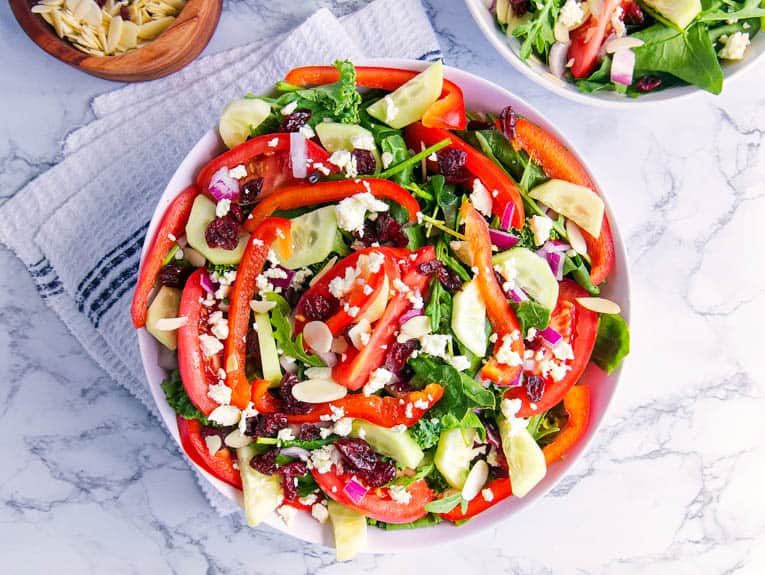


Hello,
My 3 month old has a confirmed milk protein allergy. We used HIPP PRE HA for 10 days and it noticed she was very gassy and constipated. I am currently transitioning her to HIPP Comfort (doing the slow transition and mixing the formulas until I’m at 100% HIPP Comfort.)Do you think the HIPP Comfort will be good for the milk protein allergy and gas/constipation?
Hi Natalie! Thanks for reaching out! So HiPP Comfort is more broken down than HiPP HA, so it should work better for her milk protein allergy. That said, it’s still not AS broken down as some of the US based formulas (Nutramigen, Alimentum, etc) – so if she doesn’t do well on HiPP Comfort, that probably means she needs an even more broken down formula. Hope that helps!
Hi,I was Ep for 5 months and had to wean so fast due to medical issues. I started introducing Hipp combiotic to my daughter she was fine for like 3 weeks then she developed hives in her face and have blood in her stool. She didnt have any reaction to BM when she was exclusivly on it for five months. I stopped Hipp and now Im giving her only frozen BM but I need to find a solution ASAP since my stash will be finished.Where I live I only can find Hipp HA2 German version and my daughter is 51/2 months. Can I give it to her from now?
Hi Noor! If your pediatrician is ok with you starting Stage 2 at 5.5 months then it should be fine! Since your daughter is so close to 6 months of age, I think it would probably be ok but I would just double check with your pediatrician first!
Hi thank you very much for this extensive list! I wanted to ask if you’ve come across this European extensively hydrolyzed formula. My pediatrician recommended it but I haven’t seen it mentioned anywhere even among the European formulas. It’s called Althéra by Nestlé.
https://www.nestlehealthscience.co.uk/brands/althera-and-alfamino/althera
My son actual had a reaction to it so we stopped it and moved to Neocate. I’m curious to know how it compares to the Hipp counterparts.
Thanks
Hi Noura! I hadn’t heard of that particular formula, but I like that it doesn’t use syrup solids as its main ingredient! I don’t know anything more about it though (e.g. % hydrolyzed), but from a straight ingredients list standpoint I can say that HiPP HA is slightly better because it doesn’t contain maltodextrin, while Althera does. I hope that helps! But if your son didn’t do well on it, it sounds like moving to Neocate was the right thing!
I can’t seem to find Hipp HA anywhere, only Hipp Comfort.
Hi Emma! You can buy HiPP HA here!
Hi! Your blog has been so helpful. I’m wondering why you don’t include Kendamil hydrolyzed protein and low lactose formulas in this list? Is there something you don’t prefer about that brands specialty formulas?
Hi Melissa! Kendamil’s Organic Infant formula is great, but their lactose free formulas’ first ingredient is Glucose Syrup (vs. HiPP HA/Comfort which have no sugar or syrup solids added). That’s basically the same as Alimentum or Nutramigen – so I didn’t feel like it was worth adding their lactose free formulas to this list since they weren’t really differentiated from the US based formulas in any major way! Hope that helps!
My 4 months and half baby was diagnosed with cow milk protein allergy after the stool test and the pediatrician told us to use elecare formula. We have been on this formula for 15 days now and she is still refusing it and I manage to only feed her when she is sleeping (which doesn’t always work). When do babies ever get used to the horrible taste of elecare and the smell?
Also if I will change the formula do I still need to do it gradually even if my baby hates elecare?
Hi Salma! I’m so sorry to hear about your baby’s allergy! Unfortunately, the reason Elecare tastes so bad is also the reason why it’s hypoallergenic — the milk proteins have already been “pre-digested” in a way – which makes them very easy for babies who have milk protein allergies to digest. Every baby is different – some adjust after a few weeks, and some never do! Hopefully your little one is able to adjust soon – but in the meantime dream feeding is the way to go! If you change the formula you still have to do it gradually because her body is used to Elecare right now, and given her allergy, any drastic/sudden change could be really jarring for her system and she may end up not tolerating the new formula not because her body can’t handle it but just because the change was too fast. So yes, to figure out if another formula will work better for her, you have to make the switch slowly. Hope that helps!
Thanks a lot for your reply. It helps a lot. How do I know if my baby will eventually adjust and accepts elecare. What would be the average for adjusting you mentioned few weeks (is it like 2 or 3?) What happens if she never does? What can be a good formula replacement?
Hi Salma! Unfortunately there is no way to know if your baby will eventually accept Elecare since every baby is different and they change so quickly too! I suppose the quickest adjustment I’ve seen has been about 2 weeks (but that has been the fastest I’ve heard of any baby adjusting to an amino acid formula). As I mentioned, it really is just a really large range – anywhere from 2-3 weeks, to 2-3 months, to never. I know some moms who had to dream feed their babies hypoallergenic formula until they were 1! If she never accepts it and there is no other option I would talk to your pediatrician about getting some support via OT (occupational therapy) for your baby. They can do a lot more with you in terms of helping your baby to adjust. There are no formula replacements for amino acid formulas either! It’s just really tough – the reason you’re on that formula to begin with is also the same reason there are no good replacements. There are other amino acid formulas like Neocate but they all pretty much taste the same! I would also raise these concerns with your pediatrician so that you’re getting some in person support too!
We successfully switched to Hipp HA. I am wondering if premixing formula for the day is ok and storing in fridge and warming up when ready to feed would compromise the nutrients at all or if there are other things I should consider. We typically make one bottle at a time with warmed distilled water and use within an hour. I am also wondering if there is a best practice for storing the open formula since the boxes are not air tight.
Hi Monica! So technically I think you can prepare HiPP 24 hours in advance (on their website, HiPP lists these instructions for preparing formula in advance). However, I was always just nervous about making it ahead of time, so when we were on the go I would just pack the amount of formula I needed in one container and pack the water in the bottle itself and then just mix right before feeding. HiPP lasts at 2 hours at room temperature once prepared – so you should use bottles within 2 hours of making them. For storing the open formula, I would transfer to an airtight container and store it that way! Hope that helps!
Hi my baby was diagnosed with milk protein allergy. I have her on hipp ha stage one. She is very lethargic on this formula. But she wont drink nutramigen or alimentum. Is this normal? Do these side effects fade in time?
Hi Laura! I would honestly talk to your pediatrician about this as it’s hard for me to know what’s going on without seeing her in person — “lethargic” could mean any number of things – some formula related and some not formula related. I haven’t heard of babies experiencing lethargy on HiPP HA, so it’s possible that formula doesn’t agree with her. Your pediatrician would be best able to help you figure out what’s going on! If you need to switch her formula, you can always try HiPP Comfort to see if that works better for her!
Hi, your blog is so helpful – thank you! My 7-month old son has a CMPA/I (I’m not actually sure which?? – there was mucus in his stool and microscopic blood – we couldn’t see it but they could at ped office). We started him on HIPP HA Stage 2 a couple of weeks ago, initially 1oz mixed with oatmeal, then 3 days later also 2oz in a bottle, then 3 days later 4oz in a bottle. When we moved to 1 full feed of formula (8oz) 3 days after that, he projectile vomited that night, and again the following night. We cut out the formula for two days, and then went back to a 4oz bottle – cue more vomiting. We’ve seen no changes to his stool. Do you think his body just decided it didn’t like the formula? And if so, would HIPP Comfort be worth a try or likely to have the same result? He’s otherwise breastfed, this is our first attempt with formula. Thanks so much!
Hi Jemma! That is so strange! Honestly it’s really hard to know what is going on without being able to see your son in person! I think it’s worth trying HiPP Comfort if your pediatrician is ok with you making the switch – just be sure to do it slowly, over a period of 1-2 weeks and see if it helps! I hope you find something that works soon!
Okay so my baby is 3 amd a half months old now, he started off with Similac Advance but was having diarrhea so we moved to Similac Sensitive but there was no change, so we went to Similac Isomil (soy) but no difference so we tried Similac Pro-Sensitive but that one made him extra sick, projectile vomit, diarrhea amd a fever so we switched over to Similac Alimentum but that gave him bad reflux and very bad gas, some suggested we try the ready to feed Alimentum and we did but there is no change with the bad gas. His reflux reduced a bit but he still has very bad gas and does the arching. What formula do we need to try?? Help please!
Hi Sonya! I’m so sorry your baby is having so many tummy troubles with formula! You might want to try HiPP HA or HiPP Comfort — as both of those formulas have more gentle ingredients than most of the Similac sensitive formulas. If neither of those work, then you may have to switch to an amino acid based formula! I would also recommend getting your baby tested for a milk protein allergy just to verify that’s what’s going on, if you haven’t already. And of course, make sure your pediatrician is ok with you switching formulas before you do! Hope that helps, let me know if you have any other questions!
Hi, My baby does not have a diagnosed milk protein allergy (pediatrician has done 3 stool tests in office), but since about 4 weeks he’s been super gassy, colicky, multiple spit ups per feeding (but gaining weight fine) and arching back, crying fits during eating, etc. He’s on a reflux med and unfortunately been on several formulas over time. I breast feed but have to supplement. We’ve been on Similac sensitive, gerber soothe and ready to try a Nutramagin or Allumentum until someone told me about Hipp Comfort. Should I start with comfort or try a Stage 1 first? Thank you!
Hi Emilee! You could honestly try either! If he doesn’t have a diagnosed allergy, it’s hard to know exactly what’s going on. HiPP Comfort is more broken down than HiPP HA Stage 1, but sometimes babies react better to HiPP HA Stage 1 vs. HiPP Comfort. It really just depends on the baby! So if your pediatrician is ok with it, I would recommend just picking one and trying it out to see how your baby does, and if after a few weeks it doesn’t look like it’s making a difference, then try the other one! When you transition formulas make sure to do it very slowly, over a period of 1-2 weeks, so you know that the baby is reacting to the new formula itself and not just reacting to the sudden change in formulas! Hope that helps!
Pediatrician recommended a partially hydrolized formula. Which do you recommend and why?
Hi Monica! HiPP HA is partially hydrolyzed (86-87% hydrolyzed) so that might be a good option for you if your pediatrician is supportive of you trying it!
Thank you. Are there probiotics in the HiPP HA or should we supplement with one?
Hi Monica! HiPP HA has prebiotics, but not probiotics, so you would have to supplement!
Hi there!
My daughter is 6 months old and has been on Hipp Dutch Stage 2 for the past month (prior to that she was solely breastfed). She seems to have a slight dairy intolerance – stiffening of the body, arching back (also due to some reflux) and minor red blotchiness on her face and neck after feeds. What would be comparable do the Hipp Dutch Stage 2 that is for dairy sensitive babies – the Hipp HA 2?
Thank you!
Hi Paige! Thanks so much for reaching out! Yes – to your question – HiPP HA Stage 2 would be the hypoallergenic version of HiPP Dutch Stage 2. So I would try that (assuming your pediatrician is ok with it) and see if that helps!
Thank you! She’s still breaking out into a rash around her neck and behind her ears with the HiPP HA Stage 2. I just ordered her the HiPP Comfort hoping that will do it. If that doesn’t work, should we try Kabrita? The pediatrician recommended an amino based formula and gave us PurAmino to try but I just can’t get myself to give it to her since the first big ingredient listed is corn syrup. Any other recommendations? We will do an allergy test on her soon.
Hi Paige! I’m so sorry to hear that! HiPP Comfort is worth a shot if your pediatrician is supportive of you trying it. Otherwise you’ll have to use either Alimentum/Nutramigen or an amino acid formula (Neocate/Elecare/PurAmino). After HiPP Comfort, there aren’t any other hypoallergenic options offered in the EU that are different than what we can get in the US (after HiPP Comfort, Europe offers a formula similar to Alimentum/Nutramigen). So I would say, try HiPP Comfort if your pediatrician is supportive, and if that doesn’t work, switch to their recommended formula just to see if it makes a difference, because then you can at least isolate the problem!
Hi! We did allergy testing for our 9 month old baby and she has a milk allergy, is that HiPP Hypoallergenic (HA) Stage 2 Combiotic good for that?
Hi there! HiPP HA Stage 2 is close to a hypoallergenic formula (it’s 86-87% hydrolyzed, but does not have reduced lactose or modified fats). It does work for some babies with mild milk protein allergies, but likely won’t work for babies with severe milk allergies. HiPP Comfort is more broken down — but if neither of those work for your baby then you’ll have to use a US based hypoallergenic formula like Alimentum or Nutramigen. Unfortunately you won’t know which one is best without trial and error. So what you could do is try HiPP HA first (assuming your pediatrician supports that decision) and then move on to Comfort or Alimentum/Nutramigen if HA doesn’t work. Hope that helps!
Hi I’m krystle from the Philippines i just want to know What is best formula milk for baby sensitive skin? My daughter is 3 months old..thank you!
Hi Krystle! It’s hard to know whether your baby’s sensitive skin is due to a milk protein allergy or due to some other issue (e.g. environmental factors, the type of body wash/laundry detergent you use, etc.). HiPP HA is great for babies with a dairy sensitivity, so it could be worth trying that, or you could try a goat milk formula to see if goat milk works better for her. But I would ask your pediatrician first to find out if her sensitive skin is due to a dairy issue before picking a formula! Hope that helps!
Hi. My son has been diagnosed with cmpa. He get alimentum from the doctor and I’m o dairy free diet. However he doesn’t even want to take a bottle with the formula. He doesn’t even want to eat my expressed milk from any bottle. When he was born he was bottle topping up with the normal formula and he was accepting all bottles and teats. Even now, when I’m on dairy free diet he still have a tummy problems ad is really gassy. Could you please advise with the milk and bottle either?
Hi Paulina! It’s common for babies who are breastfed to reject the bottle – because they would much rather nurse and be close to their mom! 🙂 Regarding transitioning to a bottle, the best thing to do would be to get some support from your pediatrician and perhaps an occupational therapist who can see your baby in person and provide recommendations on types of bottles to try, feeding positions, can recommend things like having your partner feed the bottle and you leave the house at that time, etc. Regarding the formula, you can certainly try HiPP Comfort or HiPP HA to see if he responds to that better than Alimentum, provided your pediatrician is supportive of that switch. Hope that helps!
Hi
My daughter is 3 months old and was on HiPP Stage 1 formula. The past month or so we noticed after every feeding she would go to the bathroom, which eventually led to a horrible diaper rash.
She was happy, but her tummy wasn’t. I took her to the Pediatrician because she had blood in her stool. She diagnosed her with a milk protein allergy. Would HiPP comfort be an option? I’m not a fan of US Alimentum.
Thanks
Hi Tori! Thanks for reaching out and I’m so sorry to hear about your daughter’s tummy troubles! If she was diagnosed with a milk protein allergy, you can try HiPP Comfort but there is a chance it may not be broken down enough for her (depending on how severe her allergy is). You can always try HiPP Comfort first (transition her slowly, over a period of 1-2 weeks) – and if it doesn’t work / she doesn’t do well on it – then you will have to move to a formula like Alimentum. Hope that helps!
Hi! Came across your blog and it’s a true God send! My 4 month old has a sensitivity (unsure if he also has an allergy at this point) to diary. He is exclusively breastfed, yet still have painful gas and spits up often (he’s a happy spit upper though). I need to start supplementing with formula to ween him off due to my own health issues. I was going to try Kabrita, but then I saw you said the milk protein is similar?
Is there a certain non-dairy formula you would recommend for my 4 month old with diary sensitivity/gas & spit up issues?
The choices just seem overwhelming as a first time mom!
Thank you!
Hi Rebecca! I’m so sorry to hear about your little one’s digestive issues! I know how stressful that can be! So yes, Kabrita won’t work for babies with a diagnosed cow’s milk protein allergy, but it sounds like your son may just have a sensitivity/hasn’t been diagnosed yet? If so, goat milk formula might be an option that works for him! If he’s a happy spitter that could just be developmental and not allergy related (the gas, though, sounds like a sensitivity to me). I’d say it’s a toss up between using HiPP HA or Kabrita for your son. Those are the two I’d start with. Unfortunately there is no way to know which is best without trial and error! I would ask your pediatrician whether they think you should move to a hypoallergenic formula directly (eg HiPP HA) or if they’d be supportive with you trying goat milk first to see if he improves (Kabrita). Based on what they say that will help you pick between these two options! Also, when you transition to any formula, make sure to do it very slowly, over a period of 1-2 weeks where you slowly increase the new formula and decrease the old one. Hope that helps!
Wow! Thank you so so much for responding! To clarify, which HiPP HA do you recommend? The HiPP HA stage 1 German or Dutch version? Or the PRE HiPP HA?
Thank you!
Hi Rebecca! No problem at all! HiPP HA only comes from Germany (there isn’t a Dutch version). I recommend Stage 1 since your baby is over 3 months of age (HA PRE is for 0-3 months!) Hope that helps!
Hi my grandson suffers with terrible reflux. Anti reflux milk doesn’t work. He’s currently having soy formula which only works with Gaviscon infant. But he has terrible constipation. I was wondering if the HIPP comfort would be suitable for him?
Hi Victoria! It’s hard to know whether HiPP Comfort will work given his reflux and constipation issues. HiPP Comfort is designed to help with constipation and has a similar make up as a US based hypoallergenic formula (which can help with reflux) so I think it’s worth a shot as long as his pediatrician is supportive of trying HiPP Comfort. If you do decide to transition him to Comfort, make sure you do it very slowly, over a period of 1-2 weeks, where you gradually increase the new formula and decrease the old one in every bottle! Hope that helps!
when should one choose Hipp HA Pre vs Hipp HA regular? I understand the difference is starch added or not and as such, when should you have starch vs. not for your baby? Thanks
Hi Vanessa! The added starch is primarily used to thicken the formula and give it a more creamy consistency. HiPP HA PRE is thinner than Stage 1, and it is also meant for babies under 6 months of age (and ideally for 0-3 months of age). It’s said that the lack of starch is easier for babies under 3 months to digest. HiPP HA Stage 1 is typically used for babies 3 months of age and up. Hope that helps!
Hi! My baby was put on Enfamil Gentlease when we were discharged from the NICU. Almost immediately I did not feel she tolerated the formula well and after further research I didn’t like the ingredients. In search for a “clean” sensitive formula, we tried HiPP Comfort, however she seemed to have similar issues on HiPP Comfort. We then made the switched to Kabrita USA in hopes that the goats milk may be easier to digest. She has done noticeably better on Kabrita, however she still isn’t eating “normally”. Her average feeding takes a full hour and while she doesn’t completely refuse the bottle, it requires A LOT of patience. This led to additional conversations with our pediatrician as what the cause might be. We just received results on her stool sample and she has blood in her stool. As such it seems while Kabrita may have been better, she is still having an issue with protein. My question is it is worth trying HiPP Comfort again, or at least point do we need to go down the Alimentum/Nutramigen route and if that doesn’t work Neotate. I just wish there was a “cleaner” hypoallergenic formula out there.
Hi Jacqueline! I”m so sorry to hear about your baby’s’ discomfort! So unfortunately, if she didn’t tolerate HiPP Comfort well, and Kabrita is still giving her some issues, you may have no choice but to go to Alimentum/Nutramigen and if that doesn’t work, Neocate/Elecare. You can ask your pediatrician if they think trying HiPP Comfort one more time might work — but my guess is, if she didn’t tolerate it well before there isn’t a great chance she will tolerate it well now. But you should ask your peds for their opinion and go with what they recommend. Hope that helps! Let me know if you have any other questions!
Hi, My baby have G6pD since birth but now he os 10 months old, and the pedia said that no soy, beans, for my baby and the doctor said that the formula milk will be given to my son is soy free that’s way I buy NAN Optipro but I want to change the milk because I feel my baby is getting weak in feeding his formula milk can you help me to decide the best soy free formula milk for my baby. Thankyou
Hi Jessa! I’m so sorry to hear that your baby has G6pD! That must be so hard to manage! Does your baby need a hypoallergenic formula or can he tolerate lactose/milk protein? If he just needs a regular cow’s milk formula with no soy ingredients, I’d actually recommend Kendamil which is a soy-free formula that is 100% organic. It’s not hypoallergenic, but it doesn’t sound like your baby needs a hypoallergenic formula. If he does, let me know and I can see if I can give you a different rec!